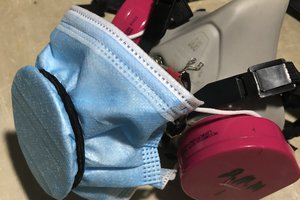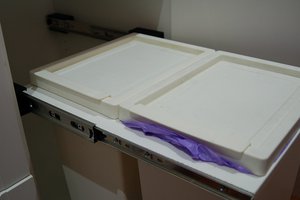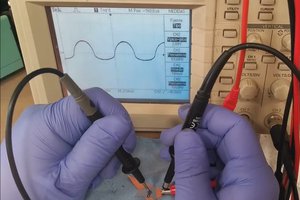A large part of my graduate dissertation has me testing the flexural properties of brittle materials at a variety of conditions. I loosely follow a handful of standard and practices as I develop my test plans, and one thing that I have been concerned about what alignment of my testing fixtures and samples. All of the calculations I do assume that everything is perfectly parallel or perpendicular to each other, and when you have three objects you are trying to align, it gets difficult. This calls for a jig to help make sure I am the same every time I test. At least that way I will be consistent.
I test using a commercial, fully articulating 4 point flexural fixture and a home built 3 point one. It is fairly easy to align the top and bottom pieces of the 4 point fixture, but the added mobility and springs which make it articulating made it difficult to ensure the sample was well aligned. I had been shown by an expert how he used a note card with a notch cut out of it to tap the test sample into place, the same distance from the wall. The approach seemed solid, but lacked a little refinement.
A little 3D printed piece would let me push both sides together, ensuring that I truly ended up with a straight piece. I needed to equal width arms to push the sample, and a large flat piece to stop on the fixture. It also needed to be small enough to fit between the bottom rollers where the sample was. While the 4 point jig works well, the next iteration I need to include a better handle or grip to help me navigate the springs on the fixture.
On the 3 point fixture, my concern is aligning the top and bottom pieces correctly. The test area is at the end of two 18 inch rods, which run though a steel chamber and furnace, leaving a lot of wiggle room when setting things up. I initially designed a piece with square wells that sat over the rollers, but there ended up being more wiggle room than I desired. In the next iteration I decided to use circular wells to let the rollers naturally rest and align themselves as the top piece came down, pushing everything into alignment. Once it is all aligned, I can tighten the various bolts and screws to hold it in place. The size and shape of the wells could use a bit more refinement. If I need a next version, I will probably keep the depth of the well, but make them shallower, as to further reduce tolerances when aligning.
Because all of the parts were fairly simple in design, I used Tinkercad to build them. Both the STL files and links to the Tinkercad projects are provided.
 Patrick
Patrick

 David Matthew Mooney
David Matthew Mooney
 Myles Eftos
Myles Eftos
 Nixie
Nixie